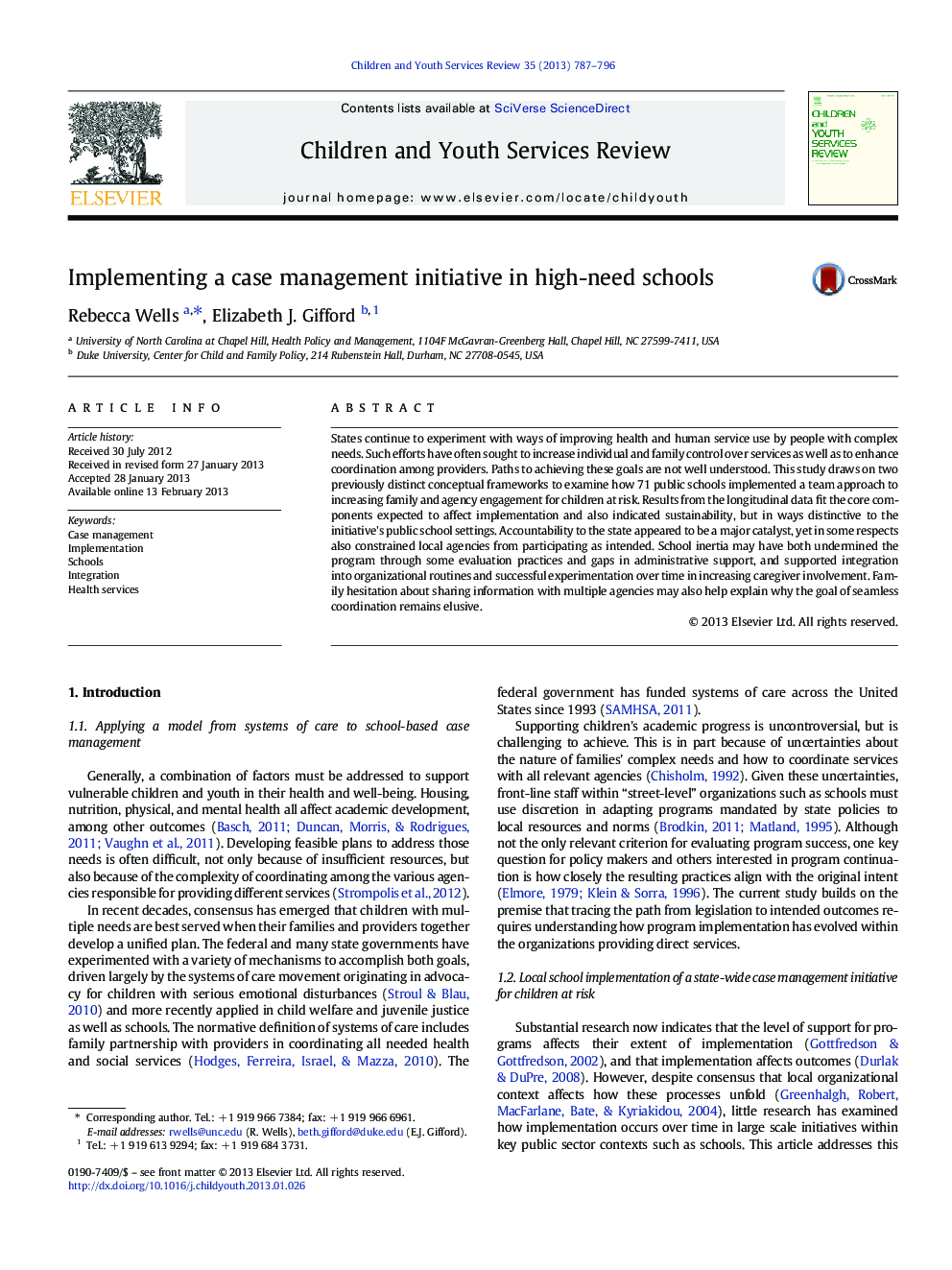| Article ID | Journal | Published Year | Pages | File Type |
|---|---|---|---|---|
| 346169 | Children and Youth Services Review | 2013 | 10 Pages |
States continue to experiment with ways of improving health and human service use by people with complex needs. Such efforts have often sought to increase individual and family control over services as well as to enhance coordination among providers. Paths to achieving these goals are not well understood. This study draws on two previously distinct conceptual frameworks to examine how 71 public schools implemented a team approach to increasing family and agency engagement for children at risk. Results from the longitudinal data fit the core components expected to affect implementation and also indicated sustainability, but in ways distinctive to the initiative's public school settings. Accountability to the state appeared to be a major catalyst, yet in some respects also constrained local agencies from participating as intended. School inertia may have both undermined the program through some evaluation practices and gaps in administrative support, and supported integration into organizational routines and successful experimentation over time in increasing caregiver involvement. Family hesitation about sharing information with multiple agencies may also help explain why the goal of seamless coordination remains elusive.
► NC has supported Child and Family Support Teams (CFST) in a range of key respects. ► However, other state policies have hindered program implementation. ► CFST serves substantial numbers of children in participating schools. ► CFST has greatly increased the proportion of planning meetings including parents. ► At the same time, program dosage and several key fidelity indicators remain low.
